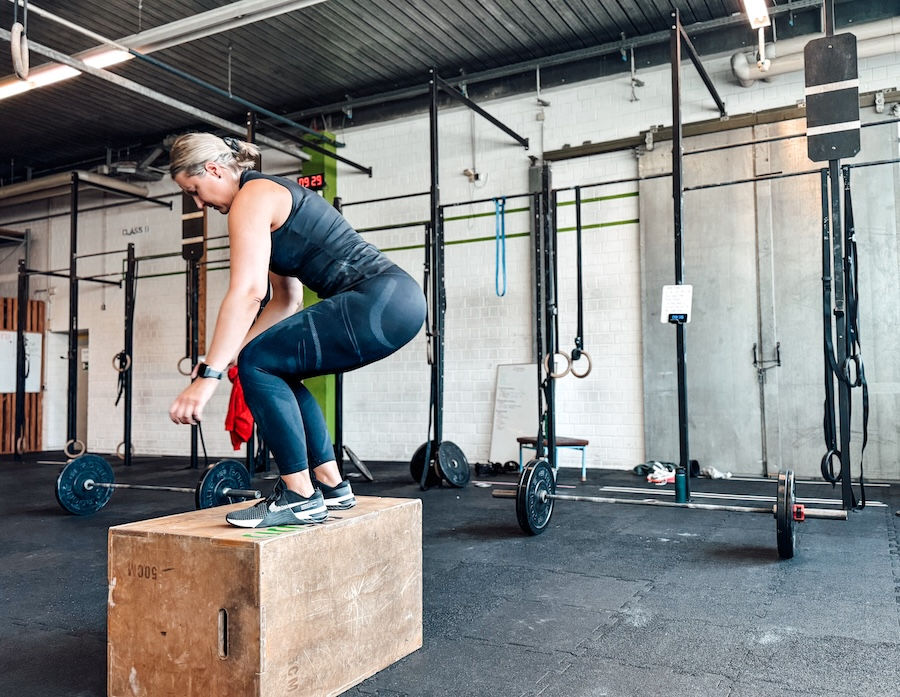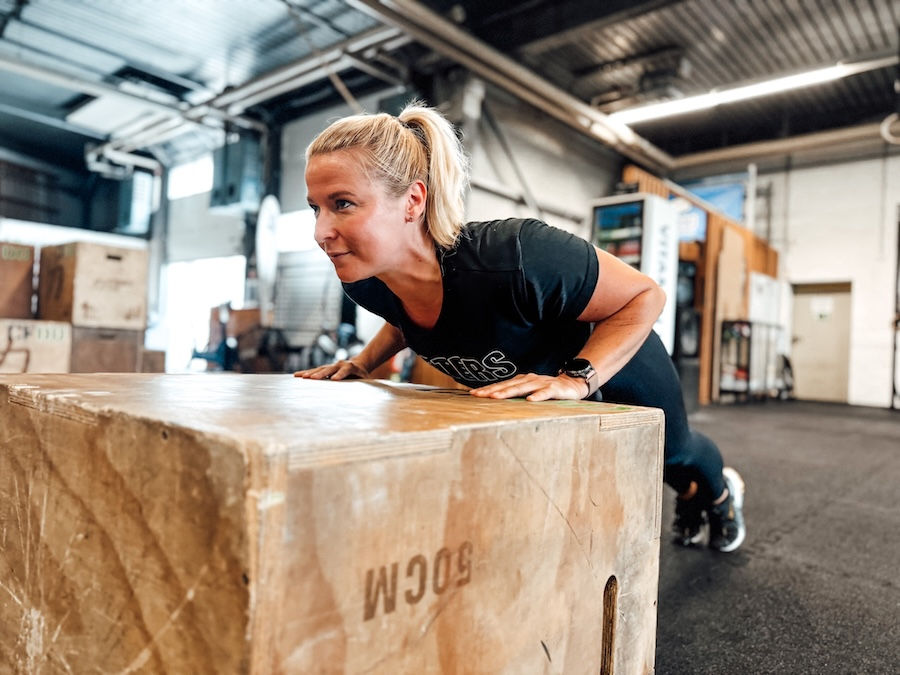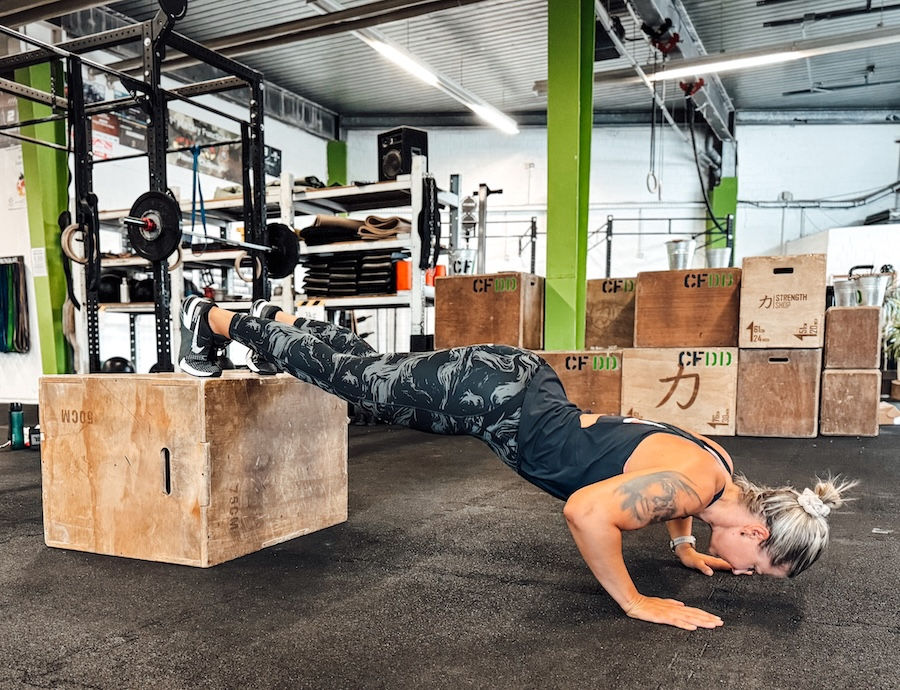Plyo Box Training: Why the Plyometric Box is So Versatile and How To Get the Most Out of It
- Lin ny
- Aug 5, 2025
- 7 min read
Have you ever seen someone jumping on a box at the gym and asked yourself, “What's the point of that?” It's actually more useful than you might think.
A plyo box—whether made of wood, foam, or metal—is one of the most versatile pieces of training equipment you can buy.
You don't need weights, complicated machines, or much space. With the box, you can train your jumping power, strength, core, and even balance—no matter what your fitness level.
We'll show you why a plyo box is so practical, what you can train with it, what you should pay attention to – and provide you with two sample workouts that you can try out right away.
Why is a plyo box so practical?

Imagine you only have limited space, maybe just a few square meters in your living room or garage. But you still want variety in your workout and something that challenges you. That's exactly what the Plyo Box is made for!
Advantages of a plyo box:
Space-saving: simply place it in the corner when you don't need it or use it as a stool.
Robust: A good box can easily withstand several hundred kilograms – whether you jump on it or place weights on it.
Versatile: You can do countless exercises with it – from jump training and strength exercises to core drills.
Customizable: With 3-in-1 wooden boxes, you get multiple heights in one box. Perfect if you want to increase the difficulty or plan different exercises.
In short: one box, many possibilities – and that for every fitness level.
What materials are plyo boxes made of – and which ones are right for me?

You may be thinking, “A box is just a box, right?” Not quite!
Plyo boxes come in a variety of materials, each with its own advantages and disadvantages. Which one is best for you depends on how you train, where you train, and how comfortable you feel doing jumping exercises.
Wooden box – the classic piece of equipment for the gym and home gym
Why wood?
Very sturdy and durable
Perfect for heavy athletes and regular jump training
Often in a 3-in-1 design: one box = three heights (e.g., 50/60/75 cm)
Who's it for?
Anyone who wants a stable, classic tool
Perfect for CrossFit and functional training
Ideal for your home gym if you have space and prefer a minimalist design
Disadvantages:
Hard: If you misjudge and catch your shin, it hurts quite a bit.
Slightly heavier and not as easy to move as foam boxes.
Soft plyo box – safe and comfortable
Why foam?
Minimizes the risk of injury from jumping mistakes
Comfortable if you are new to plyometric training or afraid of box jumps
Usually easier to move
Who's it for?
Beginners who want more safety
Athletes who train on high boxes and want to avoid injuries
Studios that need to cater to many different levels
Disadvantages:
Slightly more expensive than wood
May wear down over time if you train frequently and intensively (depending on quality)
Metal and plastic boxes – suitable for outdoor use and often height-adjustable
Why metal or plastic?
Often height-adjustable: you only need one box for different heights
Weatherproof → perfect for outdoor training
Easy to clean
Who's it for?
Outdoor athletes or clubs
People who want flexibility with multiple heights in one tool
Advanced users who value versatile settings
Disadvantages:
Metal is hard and often slippery
Plastic boxes sometimes have less stability when they are light
Which box is right for you?
For your home gym: A wooden 3-in-1 box or a softbox is ideal. Wood if you want something sturdy and inexpensive to start with, softbox if you prefer safety.
For beginners: Softbox. You can train more relaxed because you don't have to worry about “missing a step.”
For outdoor use and clubs: Metal or plastic because they are weatherproof and flexible.
For professionals: Wood or softbox, depending on preference—many also switch depending on the training day.
What can I train with a plyo box?

Think a plyo box is just for jumping? Think again.
With a box, you can train almost your entire body: legs, buttocks, core, arms, shoulders, and even your endurance.
1. Jumping power & explosiveness
The box is ideal for plyometric training – i.e. jumping exercises that improve your explosive power:
Box Jumps: Jump onto the box, landing quietly and in a controlled manner.
Depth Jumps: Jump off the box and immediately jump back up again – great for explosiveness.
Broad Jump to Box: First jump far, then onto the box.
These exercises will help you become more explosive—whether you're sprinting, playing basketball or soccer, or simply doing athletic training.
You can also use the box to modify classic strength exercises or make them safer:
Bulgarian Split Squats: One leg on the box, the other on the floor – a perfect exercise for your legs and buttocks.
Box Squats: Sit down on the box in a controlled manner, then stand up explosively – great for squat technique and power.
Elevated Push-ups: Feet on the box → more strain on the chest and shoulders.
Dips: Hands on the box, feet on the floor → triceps and chest work intensively.
A strong core = better posture, more power, fewer injuries. The box helps you with many core variations:
Plank on the box: Less strain on the wrists and can be varied.
Mountain Climbers: Put your feet on the box for extra intensity.
L-Sit Support position: Challenging, but great for the abs and hip flexors.
4. Balance & mobility
The box isn't just for strength and power. You can also train control and agility:
Step-downs: Controlled descent strengthens the knees and hips.
Single-leg Balance Holds: One-legged standing exercises on the box improve your balance.
Hip Mobility Drills: Feet on the box, mobilize your hips.
5. Metcons & Combinations
The box is also worth its weight in gold for high-intensity workouts:
Burpee Box Jump Overs: Burpee on the floor, then up and over the box.
Step-up to Knee Drive: Step-up plus knee lift, for strength and heart rate.
Jump Overs: Jump sideways or forward over the box – adds speed and fun.
In short: the plyo box is a complete gym in a simple tool.
What should I pay attention to when training with the plyo box?

The plyo box looks simple – but if used incorrectly, it can quickly become dangerous. A few basics will help you train safely and effectively without taking unnecessary risks.
Choose the right height
Make sure you land cleanly
Check the surface and box stand
The right shoes
Progression
Avoid excessive fatigue
Don't be afraid of “missteps”
1. Select the correct height
When you're just starting out with box jumps, less is more. It's better to start with a lower height and increase it as soon as you feel confident. Box training isn't about ego or Instagram videos, it's about clean, controlled movements.
Our recommendation:
Beginners: 40–50 cm is often sufficient.
Advanced: 60–75 cm – but only if you have mastered the technique.
2. Make sure you land softly
The goal is a soft, quiet landing. This shows that you are in control of the movement and protecting your joints.
Land with your whole foot, not just the tips of your toes.
Keep your knees slightly bent and your hips stable.
Do not let your knees buckle (no knock-knee position).
3. Check the ground and box stand
The box must be stable and non-slip, especially if you are training on parquet or tile flooring.
If the floor is slippery, you can place a non-slip mat under the box.
Outdoors: Place the box on a firm surface, not on gravel or wet grass.
4. The right shoes
Good sports shoes with grip are essential. Slippery soles are the number one risk for missteps.
No barefoot or sock training on the box – too dangerous, even if it looks cool.
5. Progression: Step-ups → Jumps → Height
If you are new to this or afraid of heights, start with step-ups. Then do small jumps, and only then move on to high box jumps.
This allows you to build confidence and technique before going full throttle.
6. Avoid excessive fatigue
Box jumps in a tough HIIT or CrossFit WOD are great—but only if you can land safely. If you're too tired, your landing technique can suffer.
Rule: If you no longer feel safe, switch to step-ups or jump to a lower height.
7. Don't be afraid of “missteps”
Especially at the beginning, there is a lot of hesitation about getting into the box. That's why softboxes are so popular—they take away the fear of getting hurt.
But also with wood: focus on technique, not height. With every clean repetition, your confidence will grow.
2 sample workouts with the plyo box

Do you have a plyo box at the gym or even at home and want to get started right away? Perfect—here are two short but intense workouts that will challenge your legs, core, and endurance.
It's best to use the SmartWOD timer so you can keep track of the time!
Workout 1 – AMRAP 12 minutes
10 Box Jumps (or Step-ups)
12 Bulgarian split squats (6 per leg, rear leg on the box)
8 Burpee Box Jump Overs
Do as many rounds as possible in 12 minutes.
Workout 2 – EMOM 10 Minuten
Minute 1: 8 Box Jump Overs
Minute 2: 12 Weighted Step-ups (6 per Bein)
Minute 3: 10 Elevated Push-ups (feet on the box)
Minute 4: 5 Pike Push-ups (optional knee on the box)
Minute 5: Rest
Repeat twice, for a total of 10 minutes.
Plyo Box: Simple, versatile, effective
A plyo box is not a gimmick, but a really powerful tool. You can use it to train your jumping power, strength, core, balance, and endurance—regardless of whether you are just starting out or have been active for years.
The best thing about it is that it takes up very little space and is relatively inexpensive. With one box, you have a mini gym right in your own home.




Comments